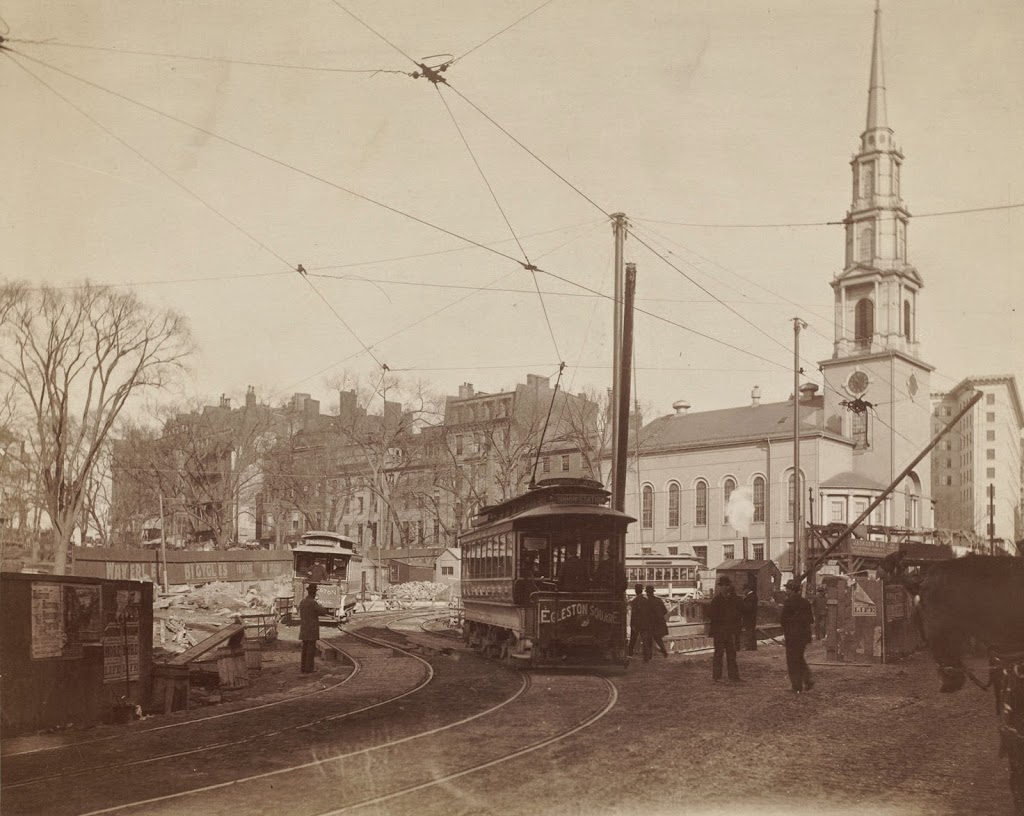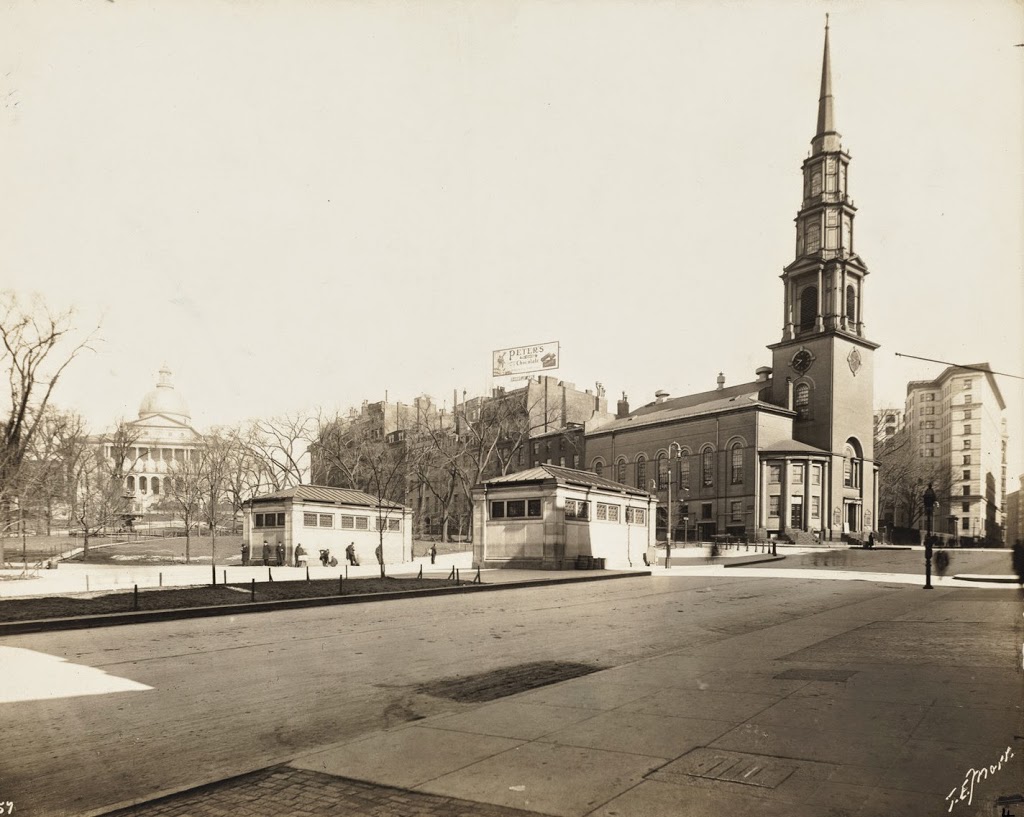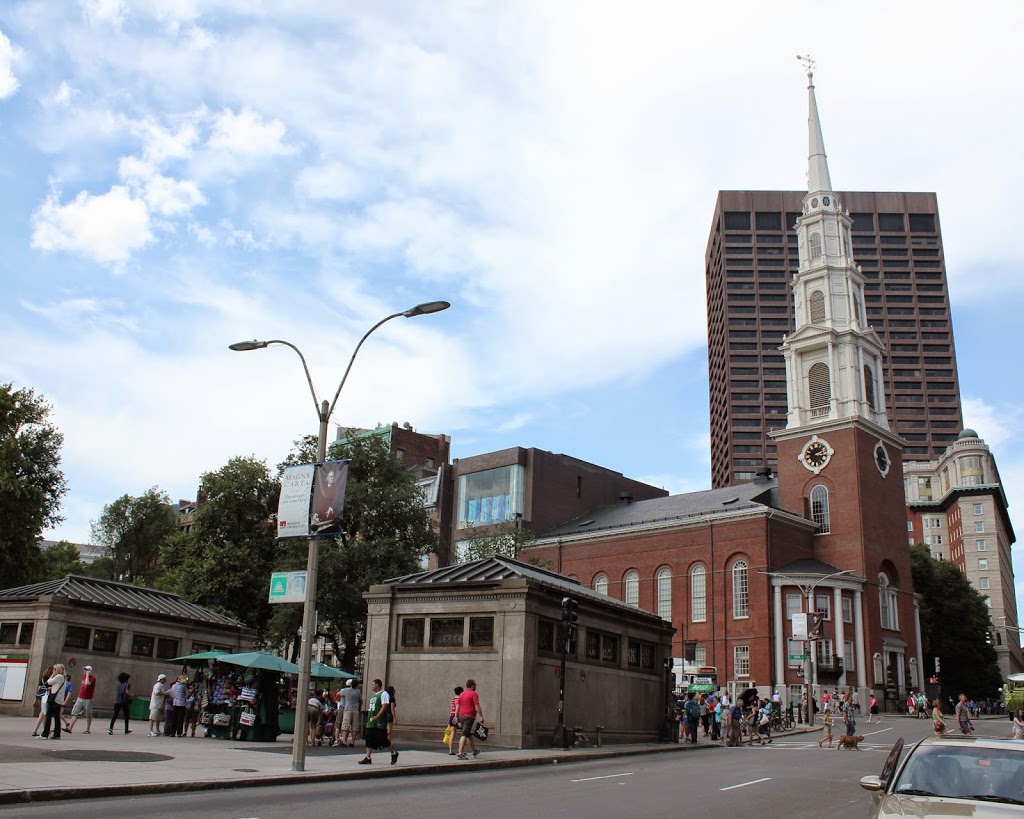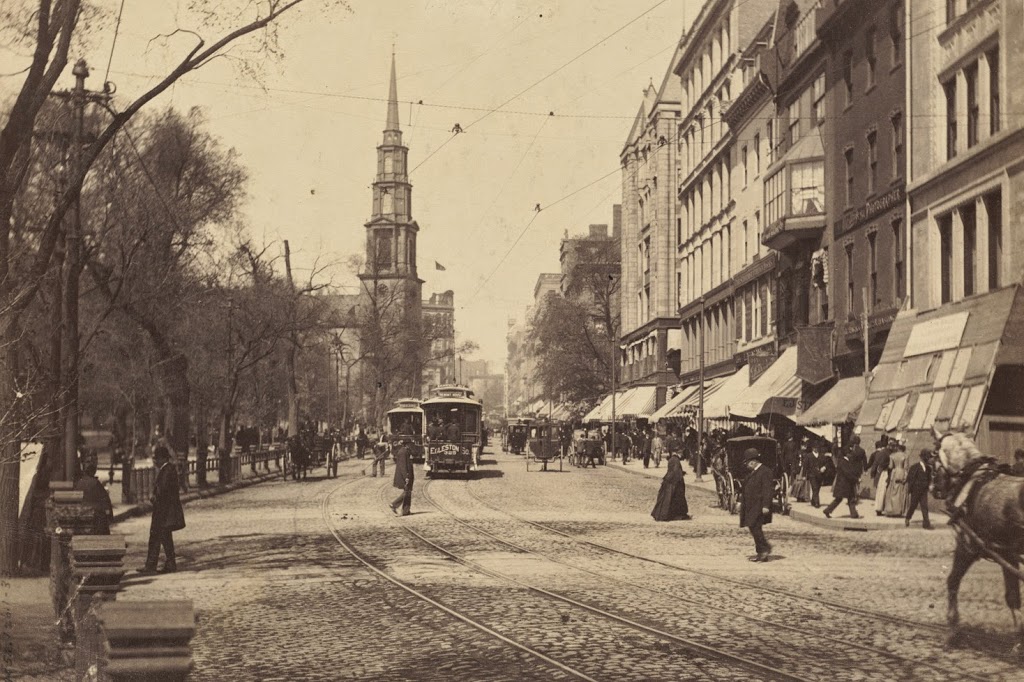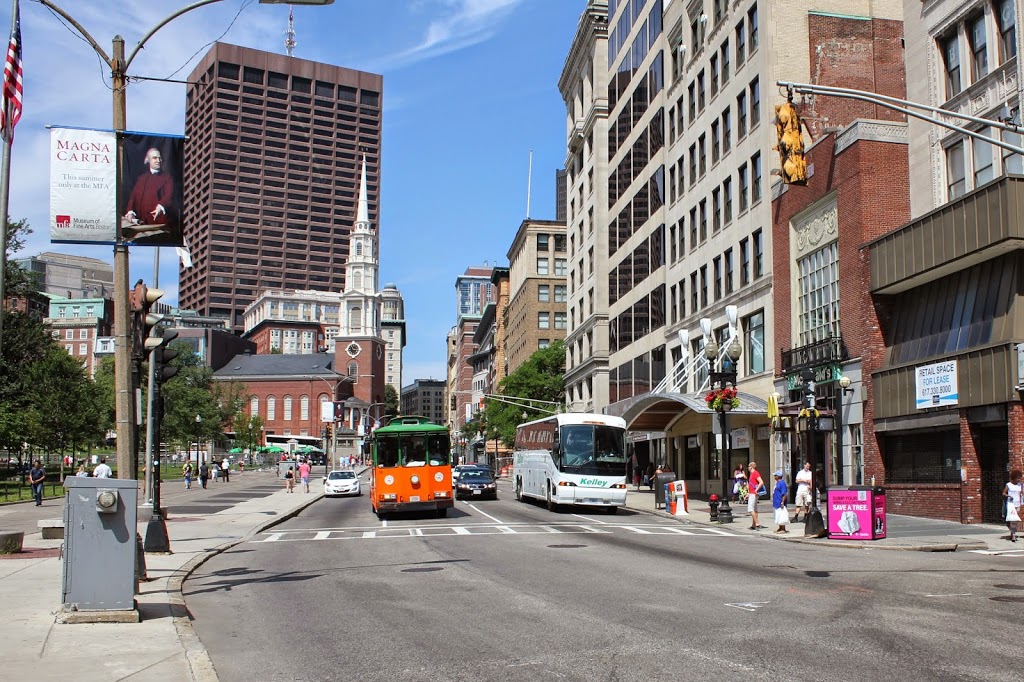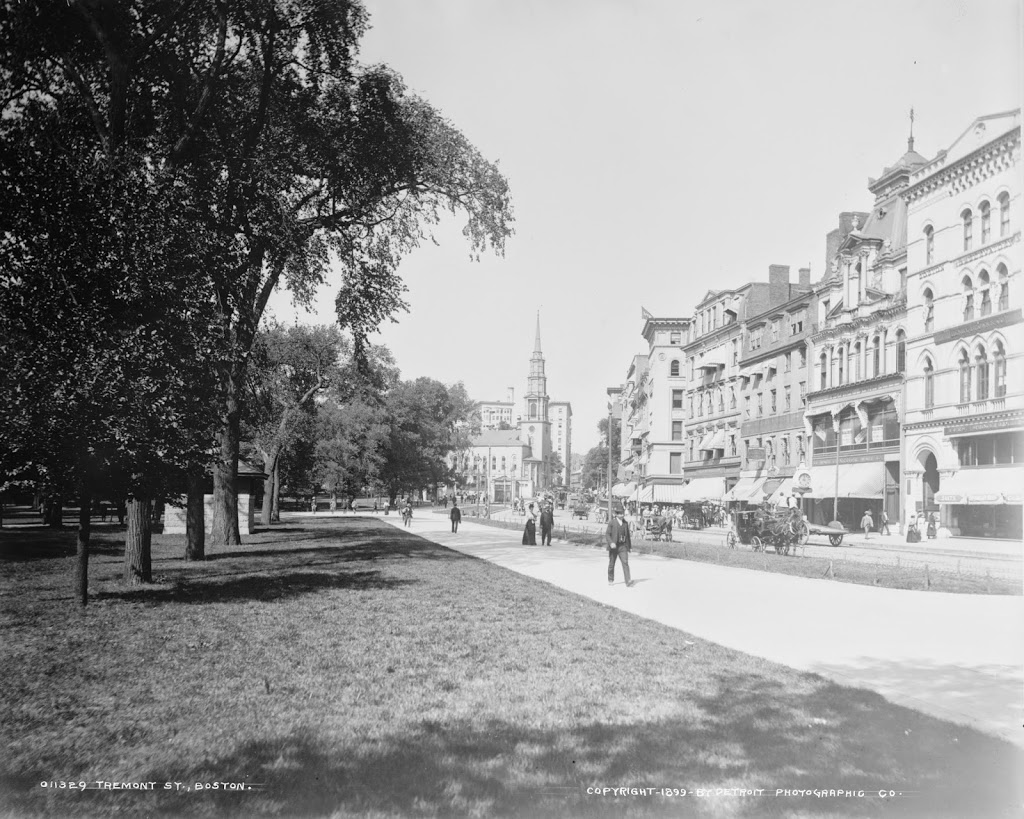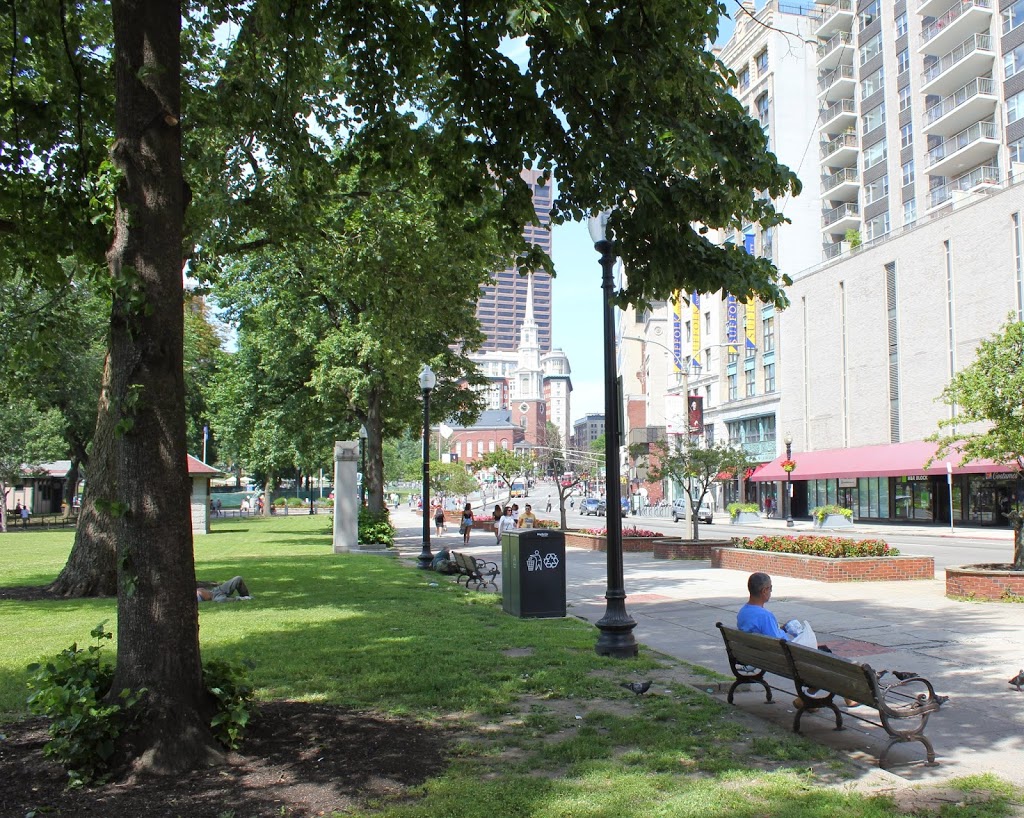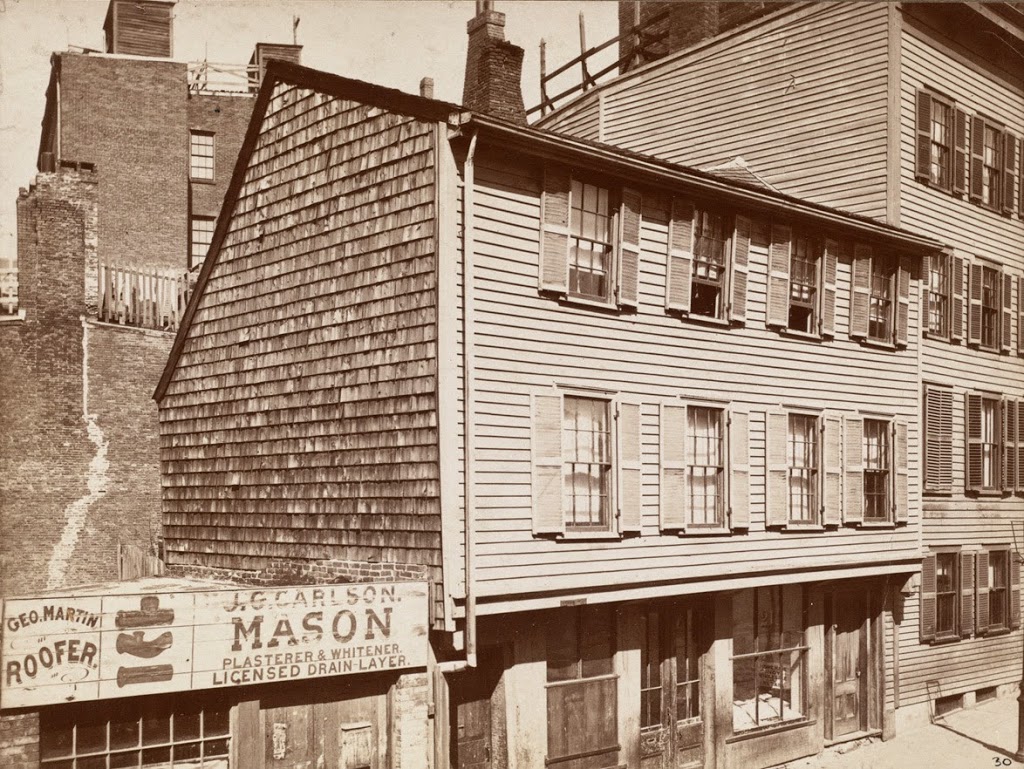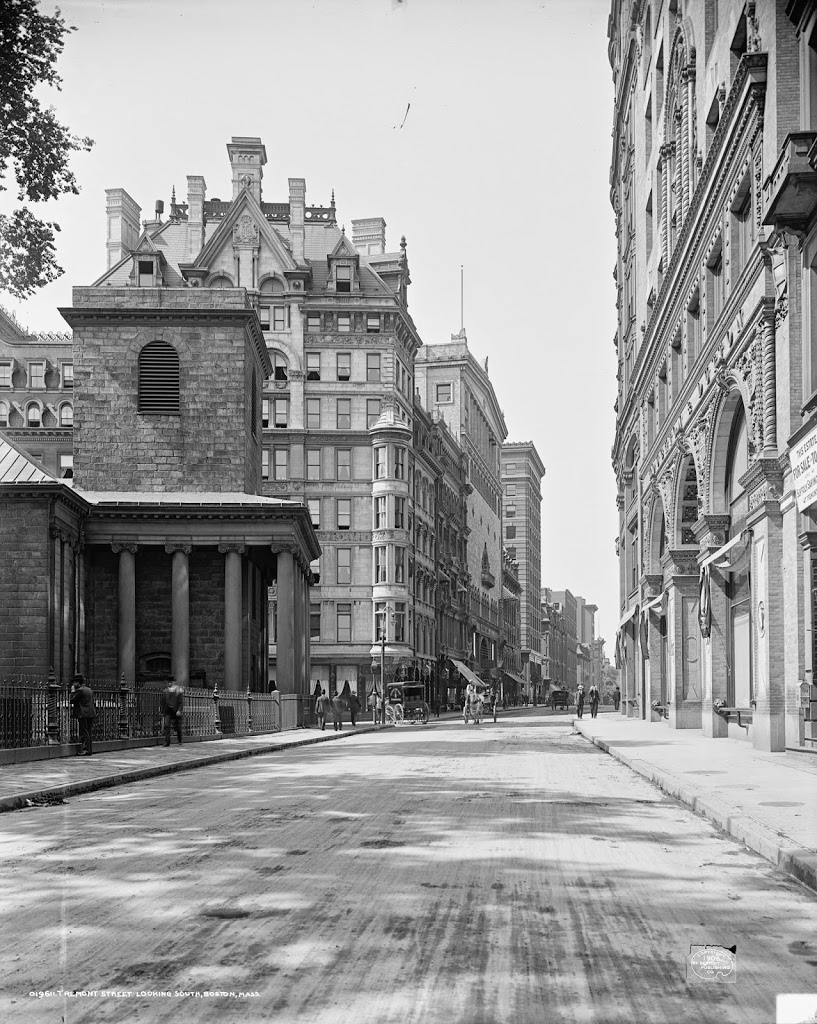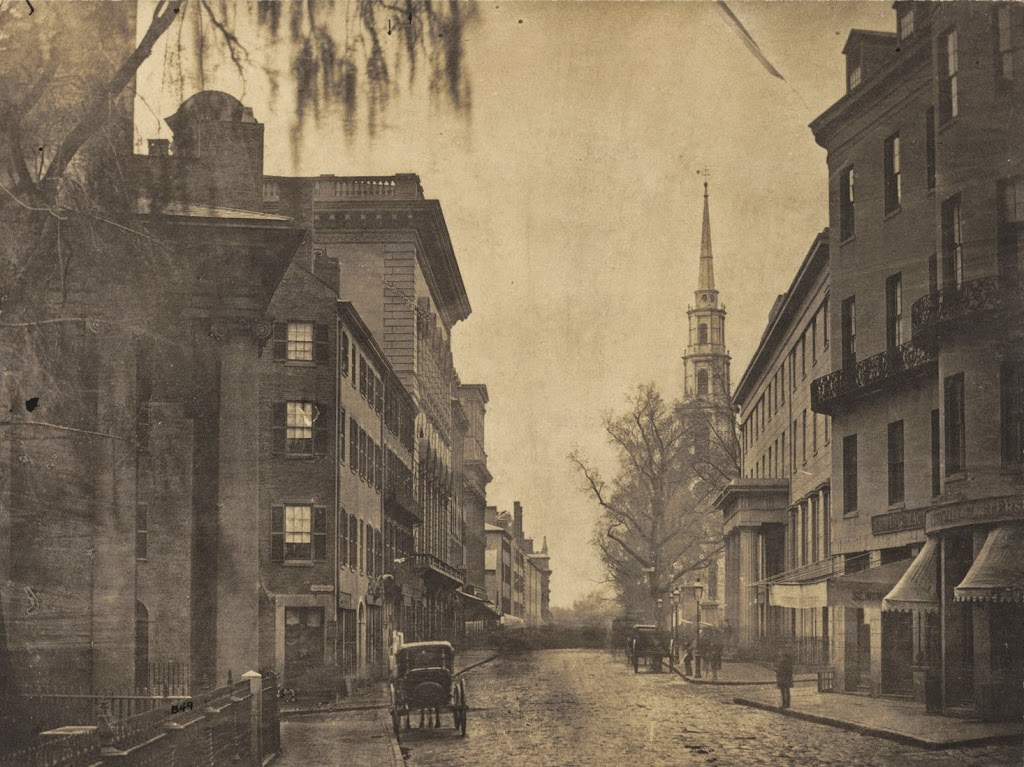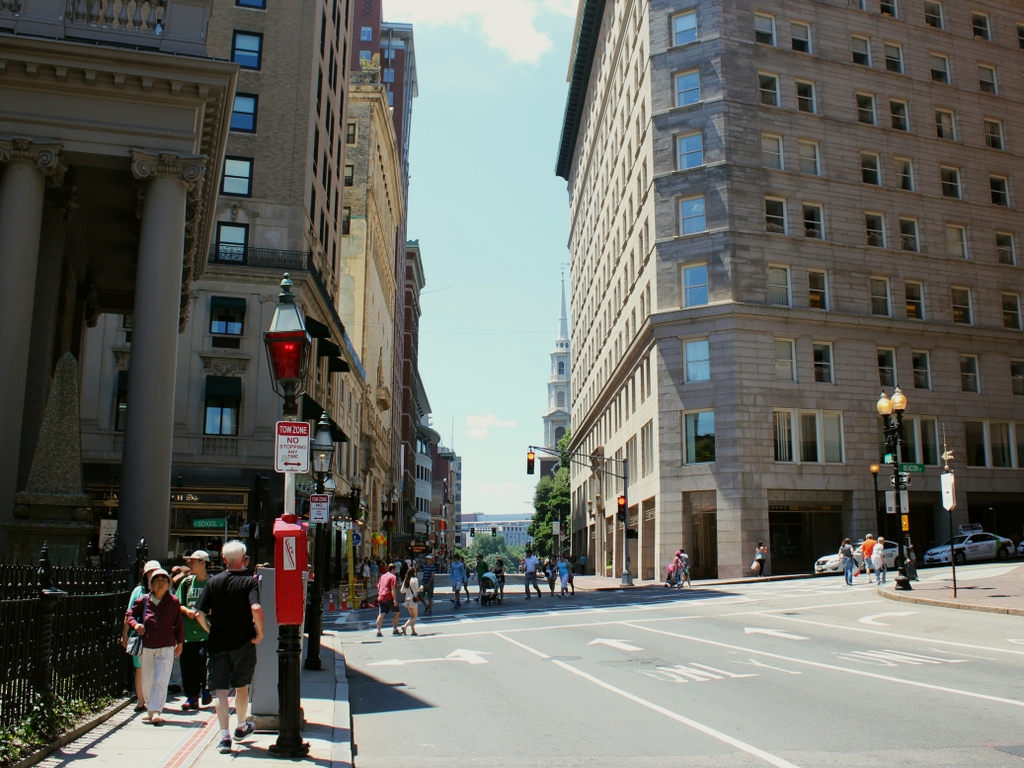Tremont Street during construction of the Park Street subway station in 1897. Photo courtesy of Boston Public Library.
Park Street Station after completion, taken in 1906. Photo courtesy of Boston Public Library.
Park Street Station in 2014:
As mentioned in previous posts, the Tremont Street Subway (today’s MBTA Green Line) was the first subway in the country, and Park Street was one of the first two stations, along with Boylston. The station opened in 1897, and helped to relieve congestion on Tremont Street by removing the trolleys from the surface, as seen in the first photo. Today, the station is still there, as is Park Street Church behind it.
See this post and this post for a few photos of the interior of the station.

